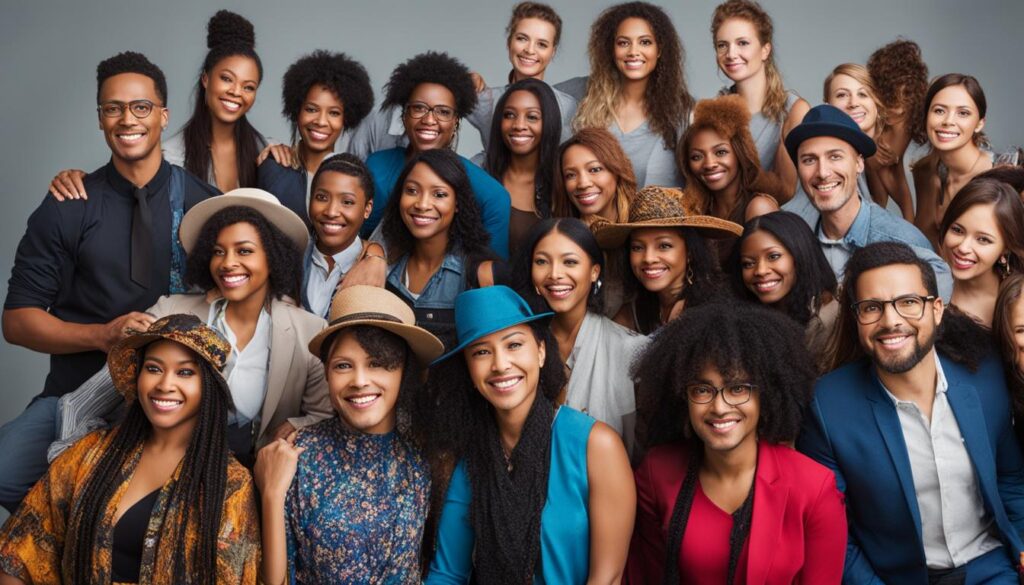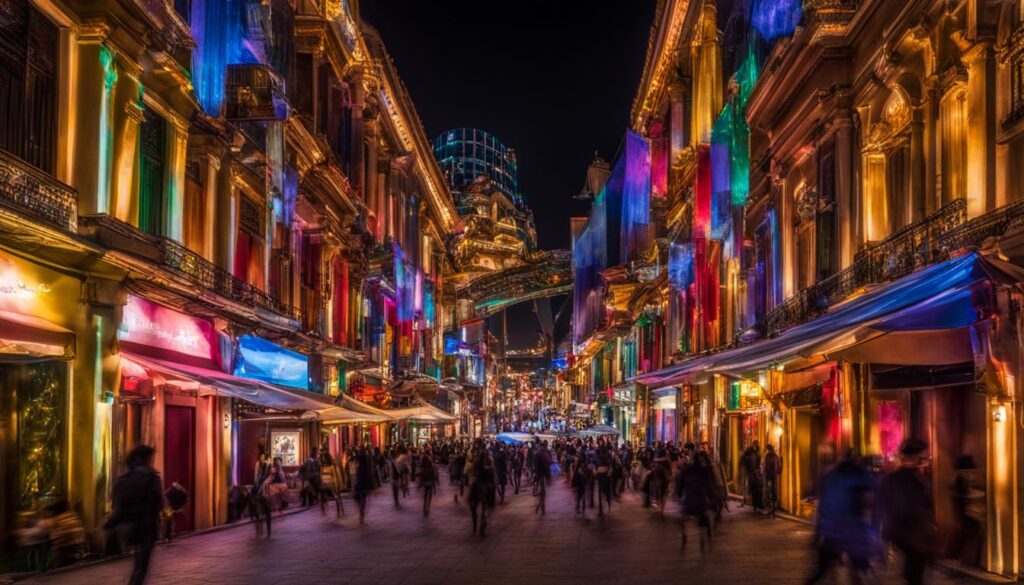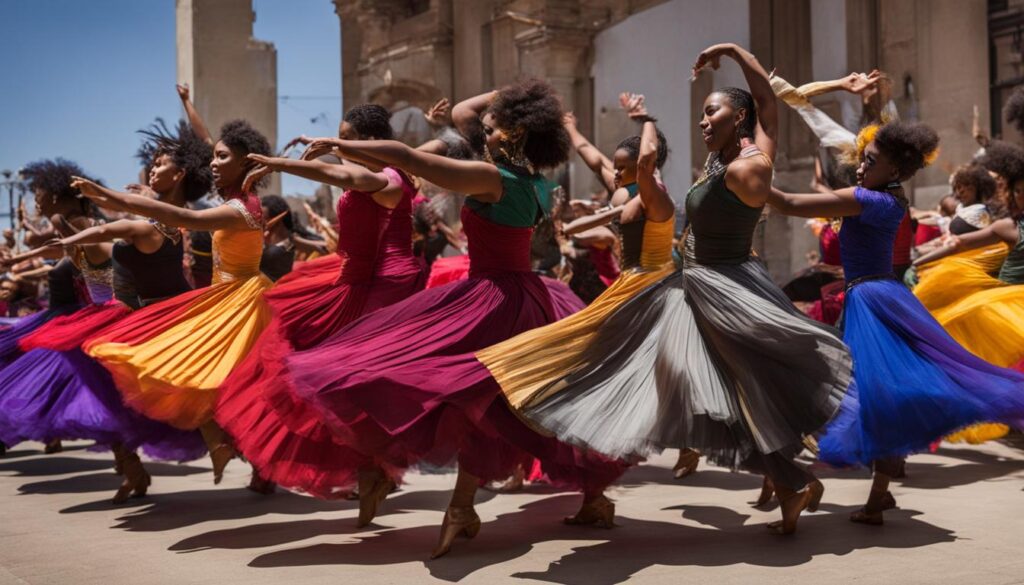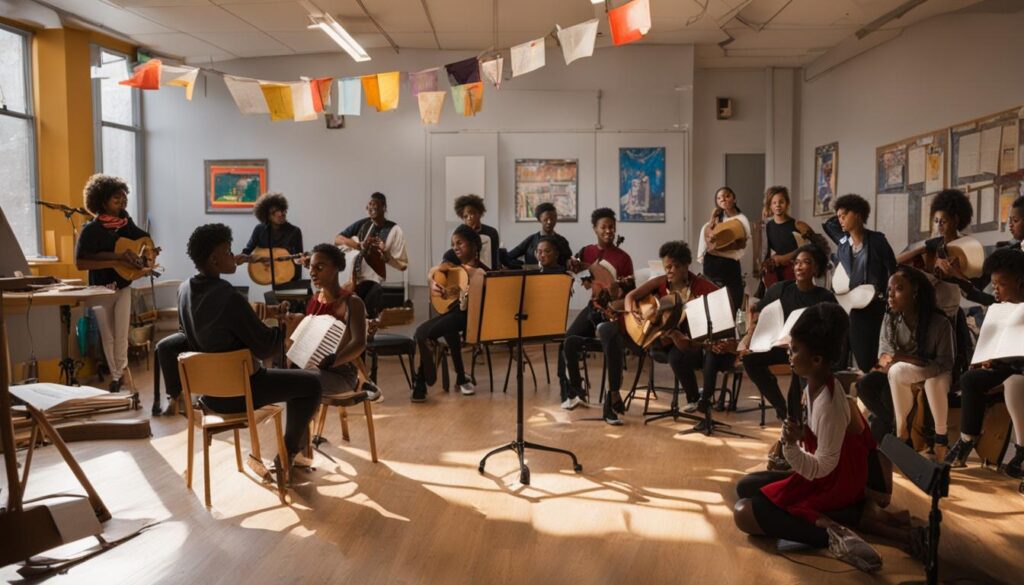Visual and performing arts are two distinct art forms that allow individuals to express their thoughts, emotions, and creativity. Performing arts encompass activities such as theatre, dance, music, public speech, mime, and puppetry, while visual arts include mediums like painting, photography, sculpting, drawing, ceramics, video, architecture, and printmaking.
Both visual and performing arts provide outlets for self-expression and offer various benefits to individuals, including improved self-esteem, development of life skills, motor skills enhancement, visual processing improvement, and support in developing executive function.
What is Visual and Performing Arts
- Visual and performing arts are distinct art forms that allow self-expression and creativity.
- Performing arts include theatre, dance, music, public speech, mime, and puppetry.
- Visual arts include painting, photography, sculpting, drawing, ceramics, video, architecture, and printmaking.
- Both visual and performing arts have numerous benefits for individuals, such as improved self-esteem and development of life skills.
- Engaging in visual and performing arts can enhance motor skills and visual processing.
Importance and Benefits of Visual and Performing Arts
Visual and performing arts play a significant role in society and education. They provide individuals with a platform to unleash their creativity, express their emotions, and share their unique perspectives. Engaging in visual and performing arts offers numerous benefits that contribute to personal growth and overall well-being.
One of the key advantages of participating in visual and performing arts is the enhancement of cognitive abilities. Studies have shown that engaging in artistic activities stimulates the brain, improves memory, and enhances problem-solving skills. By immersing oneself in the creative process, individuals develop critical thinking skills, learn to think outside the box, and explore innovative solutions.
Furthermore, visual and performing arts nurture self-confidence and allow individuals to develop a strong sense of identity. Through the exploration of different artistic forms, individuals can express their thoughts, emotions, and experiences, fostering a deeper understanding of themselves and their place in the world. This self-awareness and confidence gained from artistic expression translate into all aspects of life, empowering individuals to take on new challenges and seize opportunities.
Visual and performing arts also play a vital role in promoting cultural understanding and appreciation. Artistic expression transcends language barriers and allows for the exploration and celebration of diverse cultures and perspectives. By engaging with various art forms, individuals gain a broader perspective of the world, fostering empathy, tolerance, and respect for cultural differences.
In addition, visual and performing arts encourage collaboration and teamwork. Whether it’s through group performances, art exhibitions, or collective projects, individuals learn to communicate effectively, compromise, and work together towards a common goal. These skills are valuable not only within artistic contexts but also in professional environments, promoting successful collaborations and fostering a sense of community.
Recognizing the importance of visual and performing arts, education systems and communities have implemented comprehensive arts education programs. These programs provide opportunities for individuals of all ages to engage in artistic activities, develop their creative potential, and cultivate their artistic talents. Visual and performing arts education guarantees the holistic development of individuals, equipping them with essential life skills that extend far beyond the realm of art.
Visual and performing arts’ benefits extend beyond personal growth. They contribute to the cultural fabric of society and play a vital role in shaping the world we live in. From inspiring social change and promoting cultural heritage to challenging norms and stimulating intellectual discourse, visual and performing arts ignite conversations and challenge the status quo.
Embracing and supporting visual and performing arts education and programs is crucial in ensuring that future generations have the opportunity to explore their artistic abilities, foster creativity, and contribute to the development of a vibrant and culturally rich society.
Careers in Visual and Performing Arts
Pursuing a career in visual and performing arts opens up a world of possibilities. Graduates with a background in these fields have the opportunity to dive into diverse industries where their creative skills are highly valued.
There are numerous career paths available to individuals with a passion for visual and performing arts. Some popular options include:
- Education: Teaching visual and performing arts in schools or universities allows you to share your knowledge and inspire future artists.
- Film and Cinematography: From directing to cinematography and editing, the film industry offers myriad opportunities to bring stories to life.
- Graphic Design: Visual communication is crucial in marketing and advertising, and graphic design allows you to use your artistic skills to create compelling visuals.
- Gallery Direction: Curate exhibitions, manage art galleries, and support artists in showcasing their work.
- Art Consulting: Help individuals and organizations navigate the art world, offering advice on acquisitions, exhibitions, and investments.
- Product Design: Combine aesthetics and functionality in designing innovative products.
- Textile Design: Create patterns and designs for fabrics, fashion, and interior decor.
- Architecture: Design and construct buildings and spaces that inspire and enhance the lives of people.
- Packaging Design: Develop visually appealing and functional packaging solutions for products.
- Advertising and Marketing: Use your artistic skills to craft impactful campaigns and visually compelling content.
- Publishing: Illustrate books, design book covers, or work on the layout and visual aspects of print and digital publications.


Studying visual and performing arts equips individuals with the skills and knowledge necessary to excel in these careers. It cultivates creativity, improves critical thinking and problem-solving abilities, and nurtures a strong work ethic. Additionally, the skills acquired through studying visual and performing arts, such as effective communication, adaptability, and collaboration, are transferable and valuable in various professional settings.
If you have a passion for creativity and want to make a meaningful impact through your work, a career in visual and performing arts can be a fulfilling and exciting journey.
The Impact of Visual and Performing Arts on Society
Visual and performing arts have a profound impact on society. They have the power to inspire, provoke thought, challenge norms, and foster cultural understanding. The arts contribute to the preservation and celebration of cultural heritage, promote social change, and provide a platform for marginalized voices to be heard.
Visual and performing arts influence various aspects of society, including entertainment, advertising, fashion, interior design, film and television, and the overall cultural landscape. Artists use their creativity and artistic expressions to shape and influence society by raising awareness, promoting dialogue, and connecting people.
Through visual and performing arts, individuals have the opportunity to experience different perspectives, explore diverse cultures, and reflect on social issues. Art has the ability to evoke emotions, spark conversations, and create a sense of unity among communities.
The role of visual and performing arts in society extends beyond mere entertainment. They serve as a medium for storytelling, self-expression, and cultural preservation. Works of art can communicate powerful messages and provoke discussions on critical topics such as politics, social justice, and environmental sustainability.
Moreover, visual and performing arts provide a space for creativity, personal growth, and individuality. They encourage individuals to think outside the box, embrace their uniqueness, and pursue their passions. By engaging in artistic activities, people can develop essential skills such as creativity, critical thinking, problem-solving, and collaboration.
Visual and performing arts have a transformative influence on society. They not only entertain and inspire but also challenge societal norms, foster cultural understanding, and empower individuals. The impact of visual and performing arts is evident in various aspects of society and plays a crucial role in shaping our collective identity.


Conclusion
Visual and performing arts have played an integral role in societies throughout history, contributing to their cultural, educational, and historical significance. These art forms continue to thrive in contemporary times, embracing new trends and technologies while preserving their core characteristics of self-expression, creativity, and cultural exploration.
From classical paintings and sculptures to modern dance performances and digital installations, visual and performing arts encompass a wide range of styles, techniques, and mediums. They provide individuals with an outlet to express their thoughts, emotions, and ideas, fostering personal growth and enhancing the educational value of artistic experiences.
Moreover, the impact of visual and performing arts extends beyond individual development. They have the power to inspire social change, challenge norms, and promote cultural understanding. Examples of visual and performing arts can be found in various aspects of society, including entertainment, advertising, fashion, and interior design, shaping the way we perceive and interact with our surroundings.
Visual and performing arts are more than just forms of entertainment; they are expressions of the human experience. Their educational value, historical significance, contemporary trends, and lasting impact on individuals and society make them an invaluable part of our cultural heritage and contribute to the richness and diversity of human creativity.
FAQ
What is visual and performing arts?
Visual and performing arts are two distinct art forms that allow individuals to express their thoughts, emotions, and creativity. Visual arts encompass mediums like painting, photography, sculpture, drawing, and more. Performing arts include activities such as theatre, dance, music, public speech, mime, and puppetry.
What are the benefits of visual and performing arts?
Engaging in visual and performing arts offers numerous benefits, including improved self-esteem, development of life skills, enhancement of motor skills, improvement in visual processing, and support in developing executive function. It also enhances cognitive abilities, critical thinking, and problem-solving skills, fosters self-confidence, promotes cultural understanding and appreciation, and encourages collaboration and teamwork.
What career opportunities are there in visual and performing arts?
Graduates with a background in visual and performing arts can pursue careers in fields such as education, film and cinematography, graphic design, gallery direction, art consulting, product design, textile design, architecture, packaging design, advertising, marketing, publishing, and more. Studying visual and performing arts provides individuals with the necessary skills and knowledge to excel in these careers and unleash their creative potential.
What is the impact of visual and performing arts on society?
Visual and performing arts have a profound impact on society. They inspire, provoke thought, challenge norms, and foster cultural understanding. The arts contribute to the preservation and celebration of cultural heritage, promote social change, and provide a platform for marginalized voices to be heard. Artists have the ability to shape and influence society by raising awareness, promoting dialogue, and connecting people.
What are the characteristics of visual and performing arts?
Visual and performing arts encompass a wide range of styles, techniques, and mediums. They involve self-expression, creativity, and cultural exploration. From classical art forms to modern expressions, visual and performing arts continue to evolve and adapt to contemporary trends while maintaining their core characteristics.

